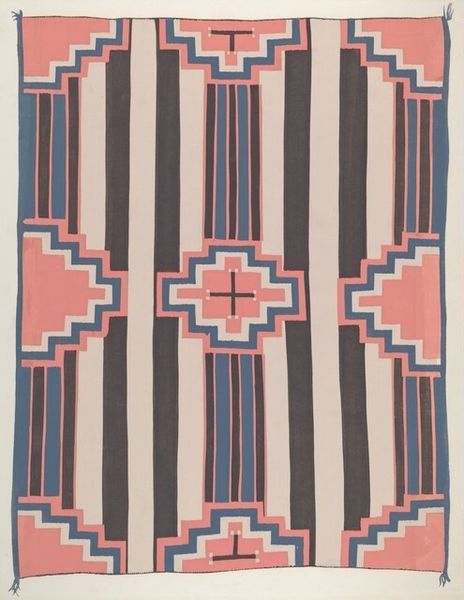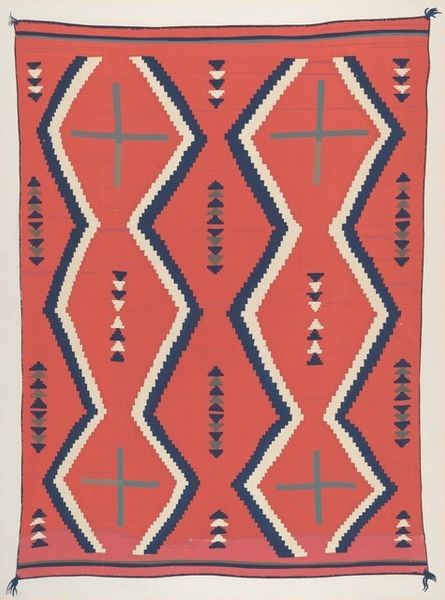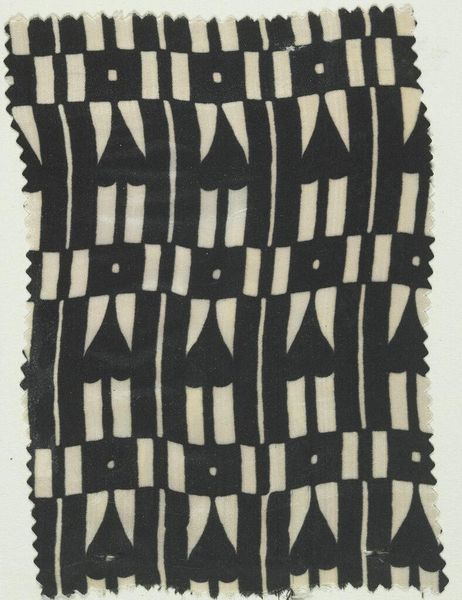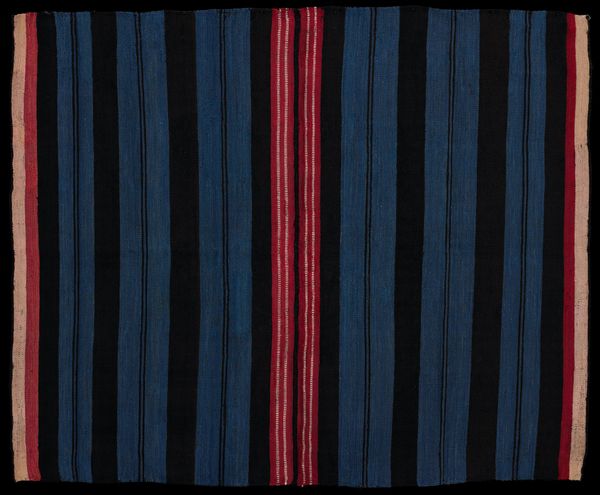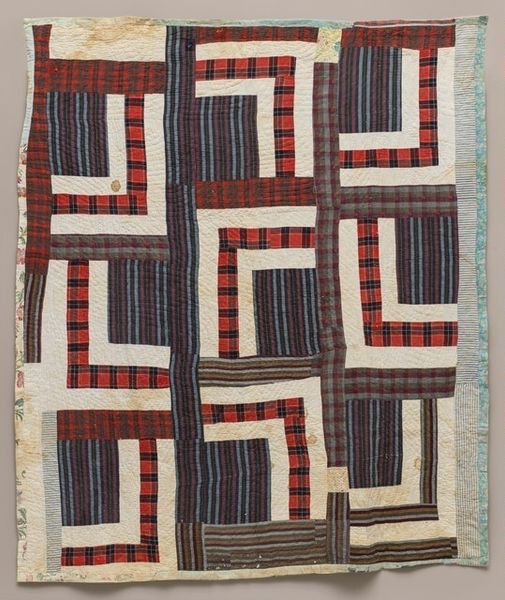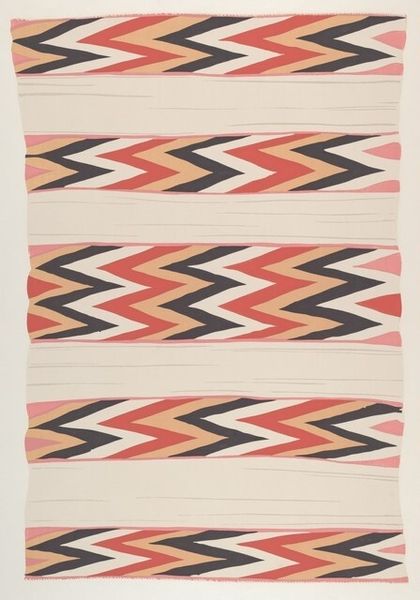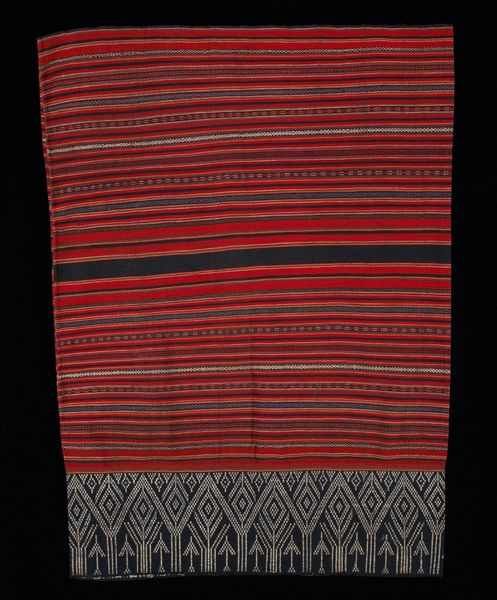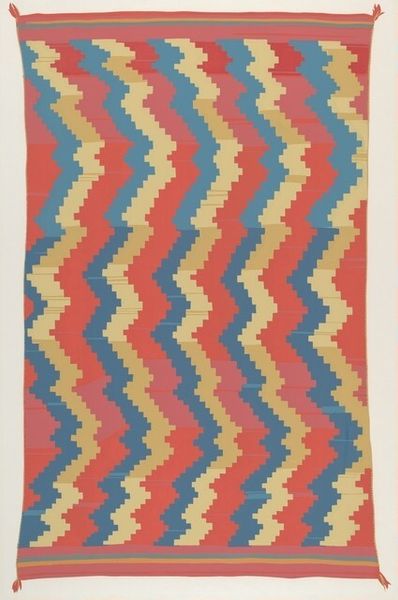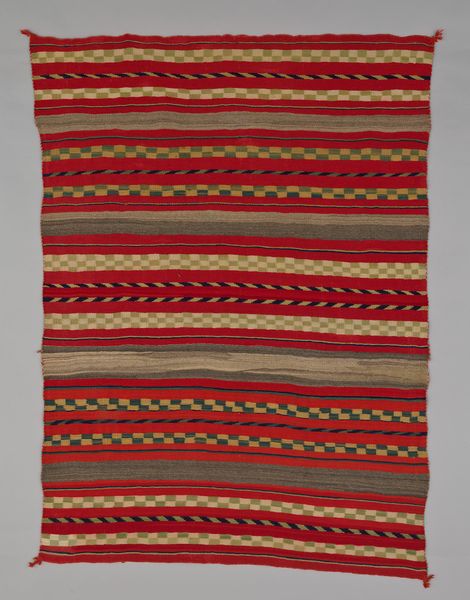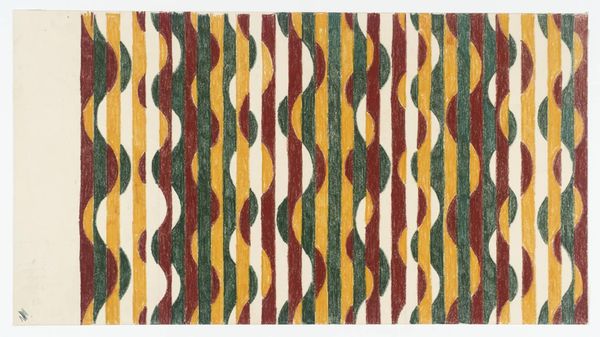
graphic-art, print, textile
#
pattern heavy
#
graphic-art
# print
#
textile
#
fashion and textile design
#
pattern design
#
geometric
#
fabric design
#
repetition of pattern
#
line
#
regular pattern
#
pattern repetition
#
textile design
#
imprinted textile
#
layered pattern
#
modernism
Dimensions: image: 550 x 418 mm sheet: 661 x 507 mm
Copyright: National Gallery of Art: CC0 1.0
Editor: This is "Plate 6," a textile design by Louie H. Ewing, created between 1940 and 1943. The repetition of these stripes and squares creates an interesting rhythm. What stands out to you about the materiality and the production of this piece? Curator: Well, its functionality intrigues me. It’s a design for a textile, meant to be replicated, consumed, and, most likely, used within the domestic sphere. It straddles this interesting line between art and craft. Consider the labour involved. We’re not talking about a unique art object, but a design meant for mass production. Editor: That makes me wonder about the intended audience. Who would have purchased or used such a textile? Curator: Exactly! Who was the intended consumer? Was this aimed at a specific social class or demographic? And what does the geometric design, with its echoes of modernism, signify in terms of taste and cultural aspirations? Think about the historical context: mass production in the 1940s, the rise of consumer culture, and the role of design in shaping everyday life. Editor: So, we are not just analyzing the aesthetic choices, but also the economic and social forces behind its creation and potential use. It encourages you to see it as more than just "art," and appreciate the production process itself. Curator: Precisely. It makes us question these traditional boundaries and value systems embedded in art history. What constitutes art, who gets to decide, and what work is deemed worthy of our attention and critique. Editor: I see now. It's not just about what the textile *looks* like, but also about how it was made and its intended place in society. Curator: Indeed, this piece becomes a window into the material culture of its time. A beautiful way to bring history to life.
Comments
No comments
Be the first to comment and join the conversation on the ultimate creative platform.
